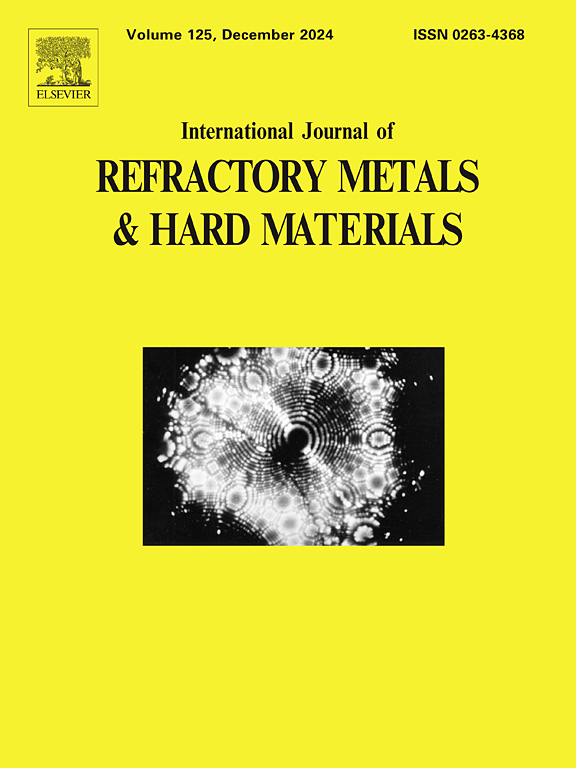In-situ preparation of WC-Co composite powders
IF 4.2
2区 材料科学
Q2 MATERIALS SCIENCE, MULTIDISCIPLINARY
International Journal of Refractory Metals & Hard Materials
Pub Date : 2024-12-03
DOI:10.1016/j.ijrmhm.2024.106995
引用次数: 0
Abstract
WC-6Co and WC-10Co composite powders with uniform distribution of Co phase were successfully prepared using WO3, Co2O3 and carbon black as raw materials by the process of “carbothermal pre-reduction + solid phase carbonization”. The phase evolution as well as the influences of carburizing time and temperature on the morphology and particle size of products were investigated. The results showed that there were two reduction paths for WO3. In one case, the reduction of WO3 was completed in the order of WO3 → W18O49 → WO2 → W and W2C. The other was that WO3 first reacted with Co3O4 to form CoWO4, and then CoWO4 was directly reduced to W and W2C. Combined with the thermodynamic calculation and XRD results, W and W2C preferentially transformed into low-carbon η phase (Co3W9C4 and Co2W4C) rather than WC phase. Subsequently, Co3W9C4 and Co2W4C were transformed into Co3W3C. Finally, the Co3W3C phase was further carbonized to form WC and Co phases. Moreover, the increase of Co content promoted the reduction and carbonization reactions. The morphology and particle size had little change with the extension of carburizing time. However, as the carburizing temperature rose, the particle size of WC increased obviously, and there was a serious agglomeration.
求助全文
约1分钟内获得全文
求助全文
来源期刊
CiteScore
7.00
自引率
13.90%
发文量
236
审稿时长
35 days
期刊介绍:
The International Journal of Refractory Metals and Hard Materials (IJRMHM) publishes original research articles concerned with all aspects of refractory metals and hard materials. Refractory metals are defined as metals with melting points higher than 1800 °C. These are tungsten, molybdenum, chromium, tantalum, niobium, hafnium, and rhenium, as well as many compounds and alloys based thereupon. Hard materials that are included in the scope of this journal are defined as materials with hardness values higher than 1000 kg/mm2, primarily intended for applications as manufacturing tools or wear resistant components in mechanical systems. Thus they encompass carbides, nitrides and borides of metals, and related compounds. A special focus of this journal is put on the family of hardmetals, which is also known as cemented tungsten carbide, and cermets which are based on titanium carbide and carbonitrides with or without a metal binder. Ceramics and superhard materials including diamond and cubic boron nitride may also be accepted provided the subject material is presented as hard materials as defined above.

 求助内容:
求助内容: 应助结果提醒方式:
应助结果提醒方式:


